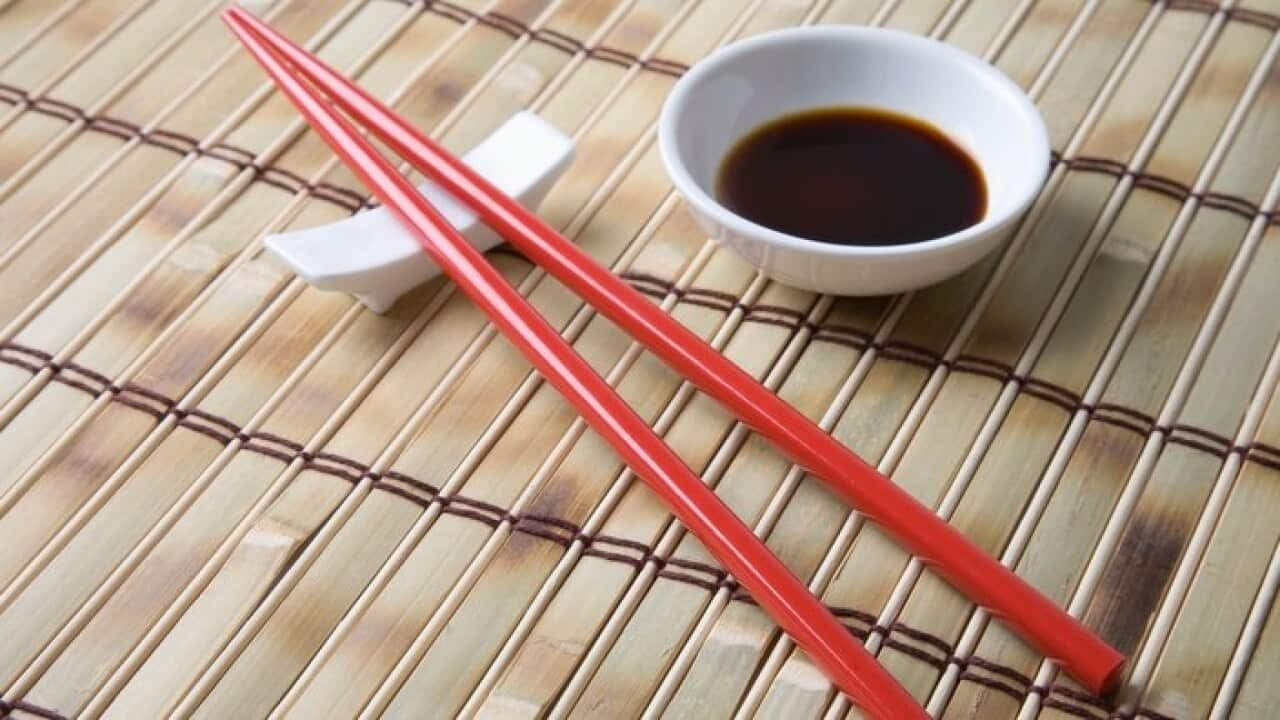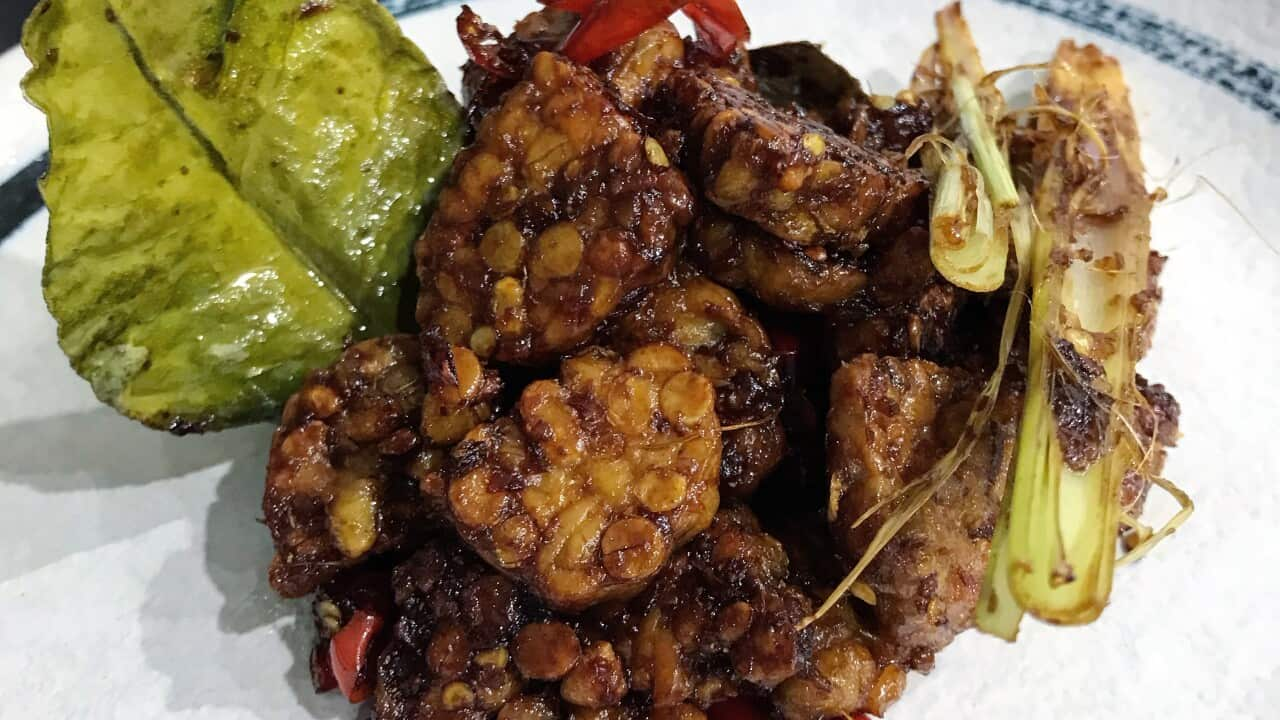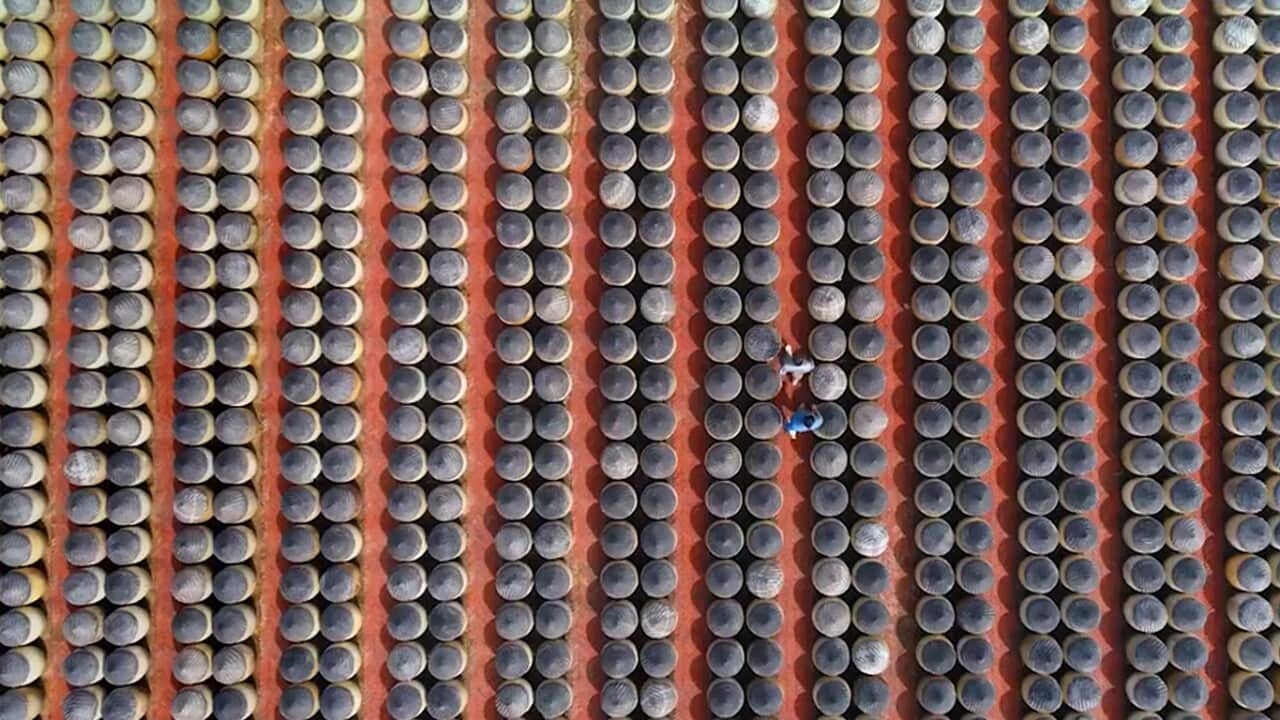There's a shapeshifting joy to soy sauce: chefs will add its calligraphic glaze to high-end sushi, while its salty punch can transform the simplest bowl of or yolk-splashed rice.
In 1804, someone bought soy sauce (a wise purchase), although people didn't always have a high opinion of the condiment. In the country's , published in 1864, author Edward Abbott claimed the Asian condiment got its flavour from crushed cockroaches that had been "well spiced".
For better 19th-Century soy sauce intel, I'd place my bets on the Chinese miners who came here during the gold rush. The salty condiment was something they sought out, which is something I learnt while researching the I made for the .
Browse the museum's collection and you’ll find a , circa 1850-1875. This brown stoneware vessel has been traced to the Guang Yu Long Trading House, a general store run by Sat and Amelia Wong in , a gold-mining town in the NSW Southern Tablelands. "Between 1864 and 1875 Sat and Amelia sold large quantities of pork, clothing and dry foods to Chinese customers," . "Like other Chinese stores, they also sold opium which remained legal until 1906."
That narcotic, understandably, never became a household item in Australia. Soy sauce, however, has. Adding a bottle to your shopping cart when at a supermarket, Asian grocer or specialty store (smoked soy sauce or something , anyone?) is a pretty easy reflex – so it's surprising to learn that people are making their own soy sauce in Australia.
spent two years as ' resident sake brewer, and as the person behind , she currently has many fermented Japanese foods bubbling away, including a recently started soy sauce.
"My soy sauce is looking very good so far!" she says. After giving it a routine stirring, she rates it as "beautiful" for a three-month-old batch. It's "still baby soy sauce though", so she plans to ferment it for another nine months to produce a deeper, more umami brew.
Given multi-tasking mastery (he's a bestselling cookbook author, podcaster and host of many shows on SBS, including ), perhaps it's unsurprising that he , flavoured with shiitake mushrooms, kombu or sugar. In fact, it only adds to his overachieving charm.
But it's also comforting to know that he starts with a shortcut – a soy brew – and doesn't make his sauce from scratch.
Supercharged

Boosted soy sauce
While working on the Culinary Archive podcast, I came across some people who actually ferment their own soy sauce: they even add creative twists you won't find in typical store-bought bottles. I really enjoyed talking to them for the show's soybeans episode and, since recording those interviews earlier this year, I'm curious to know how well their soy experiments are ageing.
As co-owner of Sydney's brewery, is usually adept at brewing things in barrels. But he admits his first attempt at producing soy sauce, in 2018, was not the greatest success. In collaboration with (who has turned ) and Jaimee Edwards, Cornersmith's "", he brewed soy sauce in two barrels for eight months before disaster hit.
"One of the barrels got tipped over at the brewery, so that was pretty devastating. And that was the promising one," he tells SBS Food. The liquid sloshing in the remaining barrel "just did not smell like it was going to be nice to eat". It got retired to the compost bin.
"It took me a year to get over it," he says and laughs.
For his second and third batches of soy sauce, Boehm worked with chefs Jeff Lusis and (from Sydney's and restaurants).
At various stages, they steamed 35 kilos of soybeans ("it is a lot of steaming") and toasted cracked wheat in Ester's wood-fired oven. At its simplest, making soy sauce involves mixing beans with toasted wheat and tane koji – the starter that kicks off the 36-hour fermentation process.
This period requires constant checking: Boehm would go home to bathe and put the kids to bed, then return to handle the koji at the brewery. The Japanese term for this process translates as "giving hands" to the ferment, to keep it going. The round-the-clock duties include mixing the koji until midnight, returning home for a crumb of sleep, only to head back to the brewery at four or five am, ready to check the soy sauce's fermentation status.
Later stages involve mixing the moromi (the mash) and a multi-stage fermentation.
Unlike the first attempt, the second soy sauce batch was "good", resembling Japanese shiro shoyu (white soy sauce) with its lighter, wheat-based colour. Bottles of it get drizzled, splashed and poured at Poly, where Lusis currently works, and chef Jemma Whiteman inherited some bottles to use at , too.
Inspired by a Korean technique learnt from 's Kenny Yong Soo Son, Lusis took the soy sauce kasu (by-product), roasted it and pulverised it into a salt with impressive levels of umami. "That was used at Ester on the Hasselback potatoes for a while. We use it on our chips that we serve at the brewery," says Boehm.
He's currently ageing his third barrel of soy sauce. "It's richer and deeper," Boehm says, and counts it as the best one yet. He credits lessons with Japanese "kojiologist" Marika Groen of for significantly levelling up his sauce-brewing techniques.
Once the condiment reaches an optimal standard, he plans to pass what he learns on to , so the First Nations company has the option of making a version of soy sauce with Indigenous Australian grains. This could dramatically boost the audience for appreciating Indigenous ingredients.
"Let's say it takes 500g to make a loaf of bread," says Boehm. "Well, 500g of grain could make probably two litres of soy sauce …And that two litres could serve…maybe 100 people?"
For the Culinary Archive podcast, I also talked to of . I'm curious how his experimental brews are going, too.
"I haven't really played around with the apricot shoyu much," he tells SBS Food. The chef began fermenting his fruity variation over a year ago and is about to 'harvest' and strain the condiment.
"You still have that typical soy sauce flavour," he says. But there's that sunny hint of apricot, too, which makes it ideal for grilled prawns. "I could make a buttery glaze from that apricot shoyu and then place it on top. I think that would be good for summer."
To create this brew, he dried the apricots until they were dark and caramelised. "I used buckwheat instead of wheat to make it gluten-free," he adds. Three litres of the condiment are still fermenting in glass jars on his kitchen shelf.
"If you looked just at the colour itself, it's exactly like soy sauce," he says.
It follows on from his first gluten-free soy sauce alternative, which he made with porcini mushrooms while working at Sydney's . The punchy sauce was splashed across the menu.
"We grilled broccolini with porcini shoyu glaze," he says. And as a vegan alternative to beef , the kitchen created a mushroom broth. "We used a little bit of the porcini shoyu at the end, to give that boost of umami."
At in Newtown, where he currently works, he's roasted leftover celeriac until it's dark enough to produce a shoyu that's herbaceous and earthy – like Chinese medicine. That brew is currently two months old.
So what's next? A roasted sweetcorn soy sauce.
"That's the plan," he says. "Because summer is coming." Corn will be in season, so the flavour (and cheaper price) will be in his favour. And like his apricot shoyu, it will be a long-lasting reminder of sunny days.
Lee Tran Lam is the host of the podcast, which features episodes on oysters, grains, coffee, tomatoes, brewer's yeast and soybeans.
ALL THE SOY

Soy sauce: Japan's liquid gold








